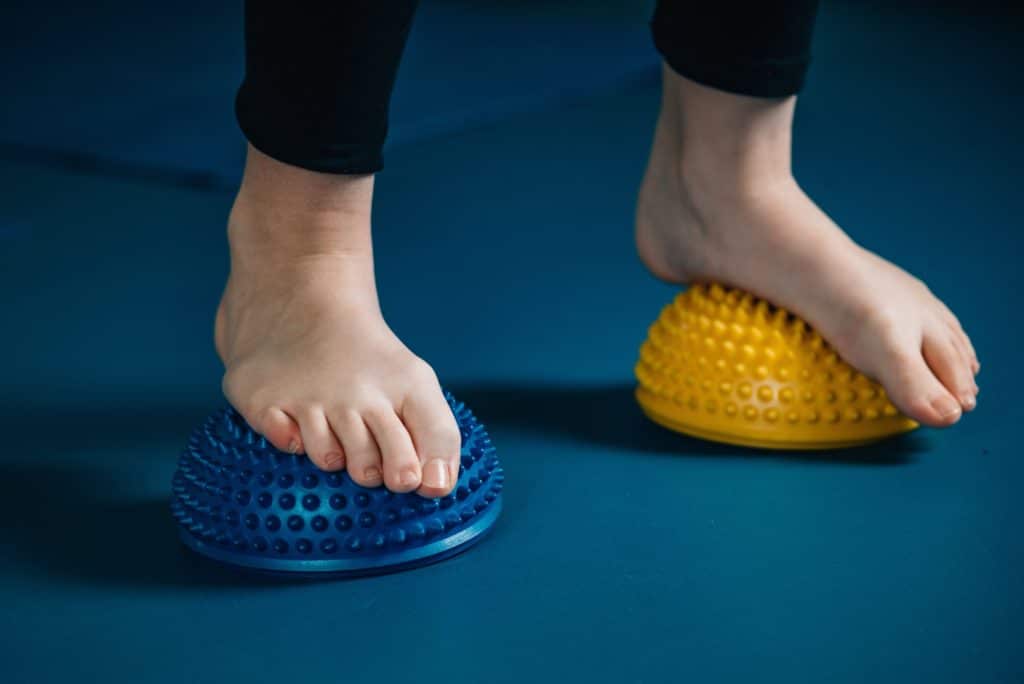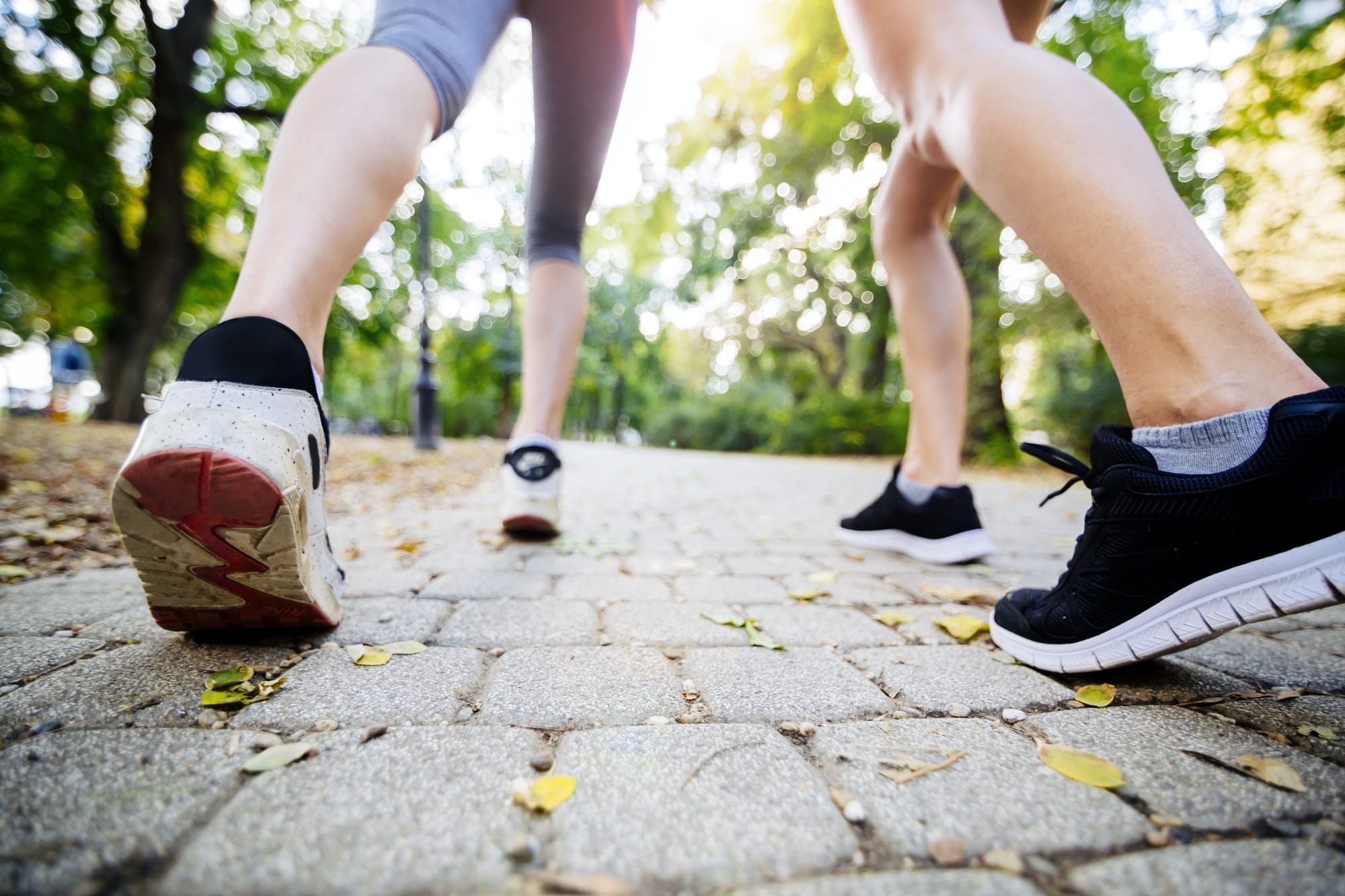Your feet are the foundation of your body’s balance. If they do not support you correctly, they can cause joint problems. The amount of pronation is a key indicator of arch height. Over-pronate individuals tend to experience no pain or discomfort.
If your feet are flat, then they should not be cause for concern. However, if they have pain after being stretched or standing for a long time, then they should be concern. The amount of pronation is related to the height of the arch. People with over-pronating feet do not experience any pain or soreness.
Although flat feet is widely considered as a negative physical condition, there are people experiencing some upside with it. Let’s take a look at both side:
Flat Feet Advantages: During sport such as basketball or volleyball that require jumping, feet with normal arch need to make an effort to roll inward for the purpose of absorbing shock. Flat feet do this naturally.
Another example like fast running where normally arched foot needs to make intense contact with the surface to push the body forward, and flat feet runners do this naturally.
Flat Feet Disadvantages: Like a double-edged sword, since flat feet don’t lower the arch to absorb shock, your body weight is then moved on to your lower back. Back pain may be developed with years of this type of burden on the lower back.
Another common disadvantage for people with flat feet is having poor stability and they tend to consume more energy used in walking and running.
How to Check If You Have Flat Feet
The type of foot you have may not be something that you think about on a daily basis. After all, why are you going to be spending your time thinking about the type of foot you have when it was simply something that you were born with?
Sometimes having a certain type of foot can be painful and can actually interfere with someone’s overall quality of life.
That’s what makes flat feet treatment so important. But in order to understand the treatment, you have to understand flat feet and flat feet pain.
If someone tells you that you are “flat-footed” it isn’t an insult. Flat Feet means that your foot doesn’t have a very obvious arch, or it doesn’t have an arch at all.
This means that instead of your foot arching up in the middle on the inside of your step, it remains flat all the way from toes to heel.
There are a number of tests that can be done to see whether or not you have flat feet. Typically, a podiatrist can do a series of visual tests to determine if you have this condition or not. The most common test is the wet footprint test.
In the wet footprint test, you would need to get your whole foot wet, and then stand on a piece of cardboard or a brown paper bag. You would then repeat this process with the other foot. Then you would examine the results.
- If you have a normal arch, then the middle of your footprint should be halfway filled and have decent sized curve along the inside. This means your arches are at the correct height for walking and running.
- If you have a high arch, you should mainly see your heel and the balls of your feet. You may see a little in the arch area but not much. This means you will most likely have a harder time with shock absorption when walking or running. Extra cushioning is required for high arches, and this can be done through shoes or inserts.
- If you have flat feet, the area where your arch should be will be almost completely filled in with no curve (or a barely visible curve) inside. This can cause your foot to roll inward.
There are unfortunately a number of problems that can be caused by flat feet. One of the biggest is the predisposition for plantar fasciitis. If you do have flat feet, you want to make sure to avoid over-training when running. Too many extra miles at once can lead to issues with plantar fasciitis.
Related: 9 Ways to Heal Plantar Fasciitis Naturally
Flat feet causes your whole foot to lean inward when you walk or run. This is known as overpronation.
Overpronation places extra stress on your ankles, and can cause issues all the way up your legs due to a misalignment of weight distribution. It can cause stress and even swelling in the knee and hip joints.
Related: overpronation vs supination | What You Can Do
What are the Causes
Flat feet can develop for a variety of reasons. Sometimes it is a genetic trait that is carried down during a pregnancy.
Another issue often could be a tarsal coalition.This means that the bones of the foot are fused together and the arch is not able to develop.
In these cases, it is diagnosed in early childhood so that parents and children can be aware of any potential treatment down the road to help promote better comfort when walking.
Another common cause of flat feet is an injury to the foot ankle or damage to the posterior tibial tendon.
These injuries can cause the natural arch in the foot to collapse and create a flat foot instead. In these cases the arch doesn’t instantly collapse, it simply weakens over time as the injury heals and a flat foot develops.
Sometimes it’s a partial flat foot and other times it’s a full flat food with no sign of an arch.
Normally, having flat feet isn’t something that is anything more of a descriptor, but there are many who are suffering from pain and discomfort as a direct result of having flat feet.
That makes therapy such as flat feet exercise or even flat feet shoe inserts critical.
What are the Symptoms
One of the first things you might notice if you’re looking for signs of flat feet is the wear on your shoes. You should see that the inside of your shoes is much more worn than the outside.
This means that your feet are rolling inward as you walk and run, placing extra stress on the interior tread of the shoe. This rolling can lead to multiple other symptoms:
- Pain or swelling in the ankles
- Knee and hip pain
- Heel and arch pain
If you find that you do have flat feet, but you don’t experience any pain, that can be normal. Most cases are milder and really don’t require any treatment. Just try to look for shoes that are designed to prevent overpronation. This will help to reduce the risk of any injury in the future.
Do flat feet need high arch support?
Although your feet do most likely have the most prominent arch height, there’s still a need for additional arch support. This is especially true for active individuals who tend to maintain a high level of activity.
While normal arches can still benefit from orthotics, they should still be worn with proper support and cushioning. Some people have fallen arches. This condition is called fallen arches.
People with flat feet often ask about the amount of arch support they need. Most of the time, they are confused about the type of support they should get. A good shoe insert provides a low or medium arch support to help stabilize their heel.
Disadvantages of High Arches: Arch support is a vital component of a healthy and balanced foot. However, it can also lead to various negative effects on the body. Having high arches can lead to heel spurs if they aren’t flattened. This prevents the toes from lifting the foot and putting stress on the outside edge.
Although your feet do most likely have the most prominent arch height, there’s still a need for additional arch support. This is especially true for active individuals who tend to maintain a high level of activity.
Why do arch supports hurt my flat feet?
The sole portion of the shoe that’s not supported by the midsole will stay in the air as it moves through the shoe’s upper. This design feature can prevent the foot from feeling pain as it pushes against the arch. Flat foot reconstruction surgery can help restore function and mobility to people with flat feet. It is considered relatively low-risk and can be performed on most individuals.
Most people with flatfeet do not have signs or symptoms of foot pain. However, some individuals experience foot pain in the heel or arch area. At birth, everyone has flat feet. Almost everyone has flat feet by the age of 6. Sometimes, they appear during adolescence or older.
Because flat feet and fallen arches fail to support your feet, they can cause pain. Foot deformities can be caused by the excessive weight-bearing activities of people with flat feet. A proper treatment for this condition is by applying pressure to the affected area.
5 Ways to Help with Your Flat Feet

One of the common questions that people ask, or wonder, is whether or not you can fix flat feet. The short answer is that you cannot fix flat feet themselves any more than you can fit your height or the length and design of your fingers.
However, you can get treatment if you are experiencing stiffness or actual pain in your feet, legs, or back as a result of having flat feet. Common treatments include:
Stretches and Exercises
These are often instructed to you by a primary care physician or a physiotherapist if the person with flat feet is referred to one.
There are a variety of stretches, including heel cord stretching (stretching the achilles tendon to prevent the foot from rolling inward) and stretching the ligament in the arch of the foot by rolling a golf ball under your feet regularly.
These simply help the muscles and ligaments stretch and release as much tension (which causes pain) as possible. Let’s take a look at some exercises you can do to correct flat feet.
Try to do these exercises at least 2-3 times a week. Ideally, you can integrate them into your daily routine and carry them out throughout the day.
Stretching the heel (30 seconds, 4 times)
- Stand on a wall, chair, or railing with your hands at the shoulder or eye level.
- Hold one leg forward and the other leg straight behind you and put both heels firmly into the ground.
- Bend your front leg while keeping your spine straight, and support yourself by pushing into the wall, feeling a stretch in your back leg and Achilles tendon.
Rolling tennis or golf balls (3 min on each foot)
- Sit in a chair with a game of tennis or golf under your right foot.
- Keep your spine straight as you roll the ball under your foot
- Concentrating on the arch of the foot.
Raise the arch of the foot (3 sets of 10 reps)
- Stand up and make sure that your toes stay in contact with the ground all the time
- Roll your weight onto your feet at the outer edges while lifting your arch as far as possible.
- Then let your feet go down again. You will train the muscles that help raise and arch your foot arch.
Calf lifting exercise (3 sets of 15 reps)
- Lift your heels as high as possible while standing.
- Hold your top position for five seconds, and then lower yourself back to the floor.
- Do two to three sets of ten to fifteen repetitions, and hold the top position and pulse up and down for 30 seconds.
Arch lifting on stairs (3 sets of 15 reps)
- Stand on steps with your left foot one step higher than with your right foot and use your left foot to balance while lowering your right foot so that your heel hangs lower than the step.
- Raise the right heel as high as possible, focusing on strengthening the arch of the foot.
- Turn your bulge inward while your knee and calf turn slightly to the side, making your bulge higher and lower your back to the starting position.
Towel curls exercise (3 sets of 15 reps)
- Start with sitting on a chair with a towel underneath your feet, roll your heels into the floor while rolling your toes to crumple the towel.
- Press your toes into your foot and hold it for some seconds and release it.
- Make sure that the ball is of your foot remains pressed into the floor or the towel. Make sure that the arch of the foot is strengthened.
Raise the toes (10 reps on each foot)
- Perform this exercise in standing yoga postures like tree position, standing forward bend, or standing split.
- While standing, push your right big toe into the floor and lift the other four toes, and push your four toes into the floor and lift your big toe.
- Make each movement five to ten times and hold each uplift for five seconds.
Ankle or Foot Braces
In some cases, these kinds of stretches can create inflammation in the ankle. With any kind of treatment, you might find comfort in an ankle or a foot brace.
These keep the foot in the right position and wearing the braces will help keep swelling (which can create future discomfort) down until the foot adjusts to the stretching and exercises that you are doing.
Rest and Strength Building
Depending on the cause of the flat foot, you may find that resting your foot is going to be the best therapy. This is especially so if you are dealing with obesity as the cause or an overuse injury.
Rest and use heat and cold therapy as recommended and your foot will be able to heal itself as much as possible.
Shop for the Right Shoes
If your flat feet are rigid and stiff, look for a shoe that has a soft lining. However, if they are flexible, look for a shoe that has arch support. Flat feet are easily identified when people stand or walk. They tend to roll over the inner side of their foot, which is known as over-pronating. If they do, stand on tiptoe or push their big toe back.
Since wearing minimalist shoes helps improve the function of your feet, it has been shown to strengthen them. If the player’s foot is flat it can cause problems with balance. It is important to check their feet to see if they are flat.
Running barefoot can help strengthen the muscles in your ankles and arch. It can also help prevent heel pain. Also, it can help minimize the stress on your feet. Those with flat feet are not suitable for marching and can sustain severe spinal damage.
When choosing the best shoes for flat feet for you, focus on the shoes that will help your gait.
- If you have mild overpronation, go for stability shoes
- If you have excessive overpronation, go for motion control shoes
- To support your fallen arch, find a shoe with midsole that does not bend easily
- Use shoes that has removable insoles so you can replace them with over the counter or prescribed orthotics.
Motion control shoes and stability shoes with firm midsoles are the best shoes for flat feet due to their ability to reduce pronation. Avoid shoes with excessive cushion and lack of support because they tend to pronate.
Related: Top 10 Trail Running Shoes for Flat Feet
Flat Feet Inserts
Often orthotic shoes are made wide to the foot to make sure that they can accommodate flat feet inserts as well. These offer further support and comfort perks that, as the name suggests, you simply insert into whatever pair of shoes that you want to wear.
This can be helpful for those that wear many different kinds of shoes and don’t have the capacity to make a single pair of specially created shoes to suit all of their needs.
The Bottom Line
Simply put, having flat feet doesn’t necessarily mean that you need to take on physiotherapy or specially designed shoes.
Many people live their entire lives with flat feet and don’t experience any kind of pain or severe discomfort as a result. However, you do have treatment options available to you in the case that you need some help.
As well, you may find that relying on the right helpful accessories such as flat feet inserts can actually provide you with added comfort and relief from everyday tension if you are someone who is living with flat feet.

Austin is the author of loveatfirstfit.com and a personal trainer with extensive knowledge in nutrition. Austin is passionate about helping others to find a suitable healthy lifestyle and feel good about themselves. Austin’s goal is to help people push their limits and achieve their physical performance.

